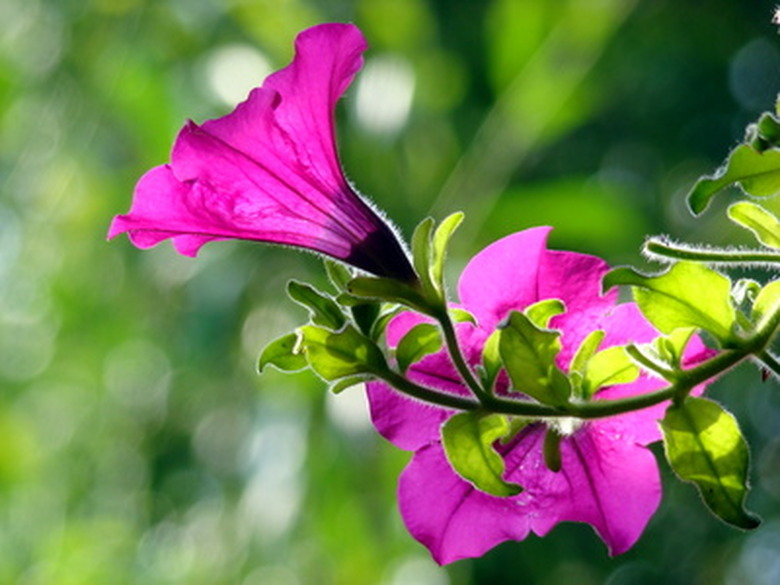Problems With Calibrachoa Not Flowering
The common name for Calibrachoa xhybrida is trailing petunia or million bells. These plants form short, trailing growth that makes them especially suitable for hanging pots and elevated planters. Calibrachoa grows to a mature height between 3 and 6 inches tall. While healthy plants can produce masses of flowers from early summer through fall, improper growing conditions can delay or restrict the formation of flower blossoms on this annual plant.
Flowering
The blossom shape of calibrachoas resembles those on common petunia plants. The single or double flowers appear in shades of red, yellow, blue, purple and red. The open blossoms are small, with a diameter between 1 and 2 inches across. A healthy plant may produce hundreds of small blossoms throughout the warm summer months, gradually tapering off production as the weather cools in the fall.
Sunlight
Inadequate sunlight is the main cause of failure to bloom in calibrachoa plants. When starting these seedlings indoors, use a high light in cool temperatures to support healthy, early growth that leads to proper bud formation. These plants require between 14 and 16 hours of sunlight to form flower buds. While the plants may survive in partially shaded locations, the growth in areas with limited light consists of leafy foliage, with few or no blossoms.
Fertilizers
These plants require a soil pH level between 5.5 and 6.0. Nitrogen fertilizers can enhance the appearance and color of a calibrachoa's leaves and help produce abundant, green foliage, but this nutrient can restrict the formation of flower buds if applied late in the spring or summer. A soil test prior to planting can uncover excessive amounts of nitrogen in the existing soil, a condition that can result in a plant without blossoms.
Care
Providing a warm, sunny environment early in the spring can encourage a calibrachoa to produce abundant blossoms. Avoid planting calibrachoa seedlings in packaged potting mixes that contain fertilizers. While these mixes can help create strong initial growth, they may limit the formation of flowers. Fertilizing with a magnesium and nitrogen fertilizer no later than early May can encourage healthy growth without affecting the production of blossoms. Pinching out crowded stems and leaves during the first five to six weeks of growth helps limit the overgrowth of stems and encourages even sunlight exposure throughout the vegetative growth. Plant these in a sunny location within your flowerbeds or pots to ensure a full amount of daytime sunlight.
References
- "Botanica's Gardening Encyclopedia"; Susan Page; 2001
